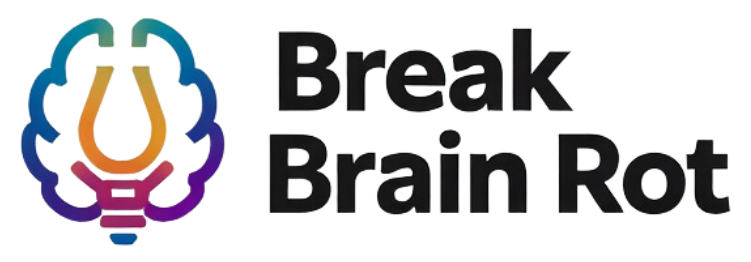In today’s hyperconnected world, it’s easy to lose hours caught in an endless stream of doom and despair online. This obsessive habit, known as doomscrolling addiction, can quietly drain your mental energy and amplify stress. Recognizing the early doomscrolling addiction signs can help you regain control before it damages your well-being. In this article, you’ll learn what doomscrolling really is, how to spot warning signs, its psychological effects, and actionable steps to stop the cycle for good.
Table of Contents
- What Is Doomscrolling Addiction?
- Recognizing the Key Signs of Doomscrolling Addiction
- The Psychological and Physical Effects
- How to Break Free from Doomscrolling Addiction
- Maintaining a Healthy Relationship with Technology
- FAQs
- Conclusion
What Is Doomscrolling Addiction?
Definition and How It Differs from Normal Scrolling
Doomscrolling addiction refers to the compulsive consumption of negative news and distressing content online. Unlike normal scrolling, which might include entertainment or social updates, doomscrolling feeds on anxiety and fear through constant exposure to alarming information. This behavior often leads to emotional exhaustion and “information overload.” According to Harvard Health, consistent exposure to distressing media can reshape perception and increase worry.
Why It Feels So Addictive
The brain releases dopamine each time you refresh for new information, tricking you into believing the next scroll will offer relief or answers. Many platforms design their algorithms to feed this behavior. Over time, doomscrolling becomes a habit deeply rooted in the brain’s reward system. For more on how tech exploits attention, read The Psychology Behind Screen Addiction.
Statistics That Illustrate the Growing Problem
Recent data from the Pew Research Center shows rising screen time across all demographics, with significant links between news consumption and stress. Long hours of negative content correlate with higher anxiety levels, particularly among adults under 35 who rely on smartphones as their primary news source.

Recognizing the Key Signs of Doomscrolling Addiction
Emotional Symptoms
Emotional red flags are often the first to appear. You might notice a rise in irritability, unease, or sadness after scrolling. Many people feel an irresistible need to stay updated, fearing they’ll miss crucial developments. If your mood drops each time you consume news, that’s a major doomscrolling addiction sign.
Behavioral Indicators
Behavioral symptoms include procrastination, neglected responsibilities, and disrupted sleep from late-night scrolling. Constantly checking your phone for breaking headlines—even in bed—indicates dependency. Learn more about this cycle in our related piece How Social Media Affects Sleep and Mood.
Physical and Cognitive Red Flags
Extended doomscrolling sessions strain your eyes, drain energy, and cloud concentration. Overexposure to blue light suppresses melatonin production, making it difficult to fall asleep. The Mayo Clinic warns that prolonged screen exposure raises stress hormone levels, contributing to fatigue and physical tension.
The Psychological and Physical Effects
Chronic Stress and Mental Health Decline
The constant barrage of distressing content overactivates the nervous system. According to the American Psychological Association, this constant vigilance can trigger symptoms associated with anxiety and burnout. The doomscroll loop keeps the body in a heightened state of alert long after the screen turns off.
Impact on Focus and Productivity
Doomscrolling fragments attention, making it harder to concentrate on meaningful work. Micro-dopamine hits from scrolling steal focus and diminish creativity. For productivity strategies that combat digital overload, visit Digital Detox to Boost Focus.
Effects on Sleep and Circadian Rhythm
Blue light from screens disrupts your natural circadian rhythm, leading to insomnia and daytime fatigue. The Sleep Foundation reports that even minimal nighttime phone use can reduce sleep quality, strengthening the doomscrolling–sleeplessness cycle.
How to Break Free from Doomscrolling Addiction
Awareness and Behavior Tracking
Breaking free begins with awareness. Track how often you check your feeds using built-in screen-time monitors or journaling apps. These tools reveal whether your updates are about connection or compulsion. For mindful monitoring strategies, explore Mindful Digital Habits.
Setting Boundaries and Replacing Habits
Designate “no-screen” windows—especially before bed—and mute notifications during work hours. Replace doomscrolling with rejuvenating alternatives: go for a walk, read uplifting content, or practice mindfulness. Over time, healthier habits will retrain your brain’s reward cycle.
Seeking Support and Professional Guidance
If doomscrolling triggers persistent anxiety or interferes with daily life, consider professional help. Therapists can guide you toward coping techniques and balance. Visit Mental Health America for counseling options and support networks.
Maintaining a Healthy Relationship with Technology
Curating Positive Feeds and Intentional Content Consumption
Take control of your digital environment. Follow credible and uplifting sources while muting fear-driven accounts. Our guide Managing Your Social Media Algorithm offers practical ways to filter negativity.
Digital Wellness Practices
Incorporate digital fasting, meditation, and mindfulness into your routine. Even a few hours without your phone can help rebalance emotional energy and restore calm focus.
Long-Term Mindset Shift
The goal isn’t to eliminate screens but to ensure they serve your growth rather than your anxiety. By cultivating conscious engagement, you shift from passive consumption to intentional connection.
Frequently Asked Questions
What are the first doomscrolling addiction signs to look out for?
Noticing irritability, restless sleep, or a compulsion to keep reading bad news are common early doomscrolling addiction signs. These indicate it’s time to reset your habits.
How does doomscrolling impact mental health and daily life?
Doomscrolling addiction feeds constant anxiety and distraction, leading to emotional fatigue, poor concentration, and unhealthy coping behaviors.
What are effective ways to stop doomscrolling without going offline completely?
Set time boundaries, follow positive accounts, and replace doomscroll sessions with journaling, mindfulness, or listening to music to stay informed without feeling overwhelmed.
Is doomscrolling the same as social media addiction?
Not exactly. Doomscrolling addiction focuses on consuming distressing news, while social media addiction may involve general overuse for social validation or entertainment.
Can mindfulness really help prevent doomscrolling?
Yes. Mindfulness helps you pause between impulses, recognize emotional triggers, and make intentional choices about when and why you reach for your phone.
Conclusion
Doomscrolling addiction may seem like a harmless habit, but its subtle effects on your mind and body can be serious. By spotting doomscrolling addiction signs early—like restlessness, anxiety, or lost focus—you can regain control of your screen use. Start by setting limits, curating your feeds, and embracing mindful digital practices. It’s time to break free from the scroll trap and build a calmer, more intentional relationship with your technology.

